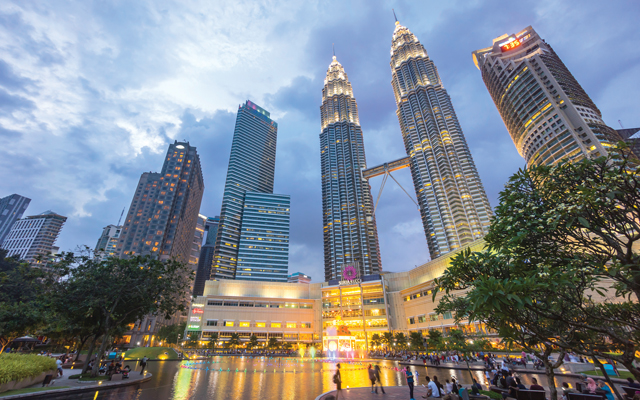Malaysia anticipates record tourist surge with visa-free entry initiatives, and paves the way by enhancing air connectivity
Tourist arrivals to Malaysia are expected to surpass pre-pandemic levels this year, buoyed by enhanced air connectivity and a simplified entry process for tourists from the top two medium-haul markets in terms of arrivals, China and India.
Musa Yusof, the deputy director-general (promotion) of Tourism Malaysia, shared this optimistic outlook during a tourism forum in Kuala Lumpur in December 2023. He anticipates that tourist arrivals for the current year will exceed the previous record of 26.1 million set in 2019.

In celebration of the 50th anniversary of diplomatic relations with China, the Malaysian government has implemented a 30-day visa-free entry for Chinese nationals.
This initiative has been extended to Indian nationals as well, with the aim of fostering increased tourism and economic development within the country. The visa-free entry for both Chinese and Indian nationals will be in effect until December 31, 2024.
Tiong King Sing, Malaysia’s minister of tourism, arts, and culture, emphasised the importance of the visa exemption for Chinese and Indian tourists, the top two medium-haul markets for Malaysia, in stimulating industry growth and recovery.
He said: “Indirectly, this will be able to boost the economy of tourism-related industries such as hospitality, retail, transport, tours and so forth.”
Airlines connecting Malaysia with China and India have also announced increased services – China Eastern Airlines will commence new services between Nanjing and Kuching from June 24 with three weekly flights, and introduce daily flights from Shanghai to Penang from July 24.
Tourism Malaysia’s director-general, Ammar Abd Ghapar, revealed in January that the board is engaged in discussions with various Chinese airlines to institute direct flights linking smaller provinces or “second-tier cities” in both China and Malaysia.
This initiative aims to enable travellers from less prominent regions in China to easily visit Malaysia, eliminating the necessity to journey to major airports and consequently reducing travel time.
AirAsia will also increase capacity on its flights between China-Malaysia and India-Malaysia to 230 weekly flights starting from 1Q2024, with up to 5.2 million seats per year.
AirAsia Malaysia recently inaugurated a new service between Kuala Lumpur and Thiruvananthapuram on February 21 with four weekly flights and it will soon launch new services from Kuala Lumpur to Jaipur from April 21 with four weekly departures.
On May 1, AirAsia will launch a new direct route connecting Kuala Lumpur with Ahmedabad with four weekly flights, which will serve as AirAsia’s first step into the state of Gujarat from Malaysia, further cementing its foothold in South Asia.
Additionally, the airline has outlined plans to progressively enhance the frequency of its current services linking Kuala Lumpur with Chennai, Tiruchirappalli, Kochi, Hyderabad, Bengaluru, and Kolkata.
Wong Hon Wai, Penang state minister for tourism and creative economy at the seventh edition of the Penang Roadshow to India 2024 that was held in Chennai in January, said that discussions were in progress between the state government and an Indian airline for direct flights between Chennai and Penang.
AirAsia Aviation Group CEO, Tharumalingam Kanagalingam, shared: “India has always been one of our biggest markets and we are thrilled to enhance our connectivity to the country at this opportune time following the government’s recent announcement of visa-free entry for Indian nationals to Malaysia.”
As air travel continues to rebound, two major international airports are gearing up for the anticipated increase in passenger arrivals in the coming years.
The expansion of the Penang International Airport terminal building is set to commence this September. The project is expected to take 48 months to complete. Upon its conclusion, the expanded terminal will have the capacity to accommodate 12 million passengers per annum from the current maximum capacity of 6.5 million.
In addition, Kuala Lumpur International Airport Terminal 1, the country’s primary gateway, is set to undergo a comprehensive three-year renovation starting next year when the terminal capacity reaches 90 per cent.
This initiative aims to address operational challenges and enhance facilities. Iskandar Mizal Mahmood, the managing director of Malaysia Airports Holdings, has outlined areas in need of improvements and these include self-baggage drop-offs, a redesign of check-in counters, implementation of new aerotrain and baggage handling systems, and the introduction of new F&B outlets and lounges.




















